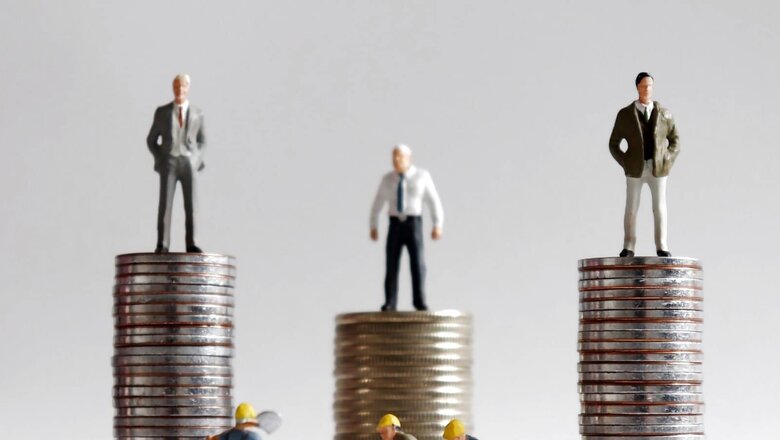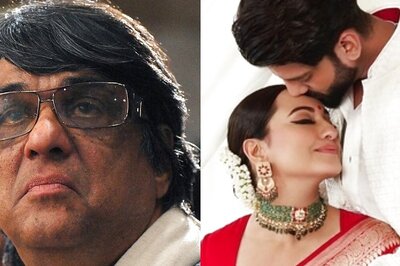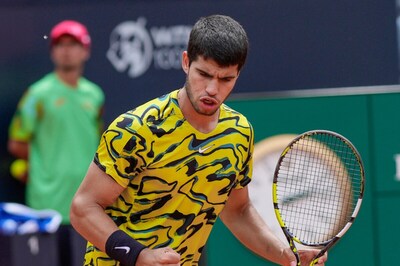
views
Wealth inequalities have always been a matter of global concern and have invited criticism and deliberations at various international forums. Recently, in Davos (Switzerland), while releasing its annual inequality report on India–‘Survival of the Richest’–at the World Economic Forum’s (WEF) annual meeting, Oxfam International stated that “the richest one percent of people in India own more than 40.5 percent of the country’s total wealth.” No one can deny the grim income disparities in our country, but I am wondering how Oxfam India reached this conclusion so precisely and created global ripples, becoming a point of reference for the masses.
Though there is no logic behind the methodology, sourcing of information and the way the conclusions are reached, one has to admit that unfortunately, India has been at the centre stage of Oxfam International. No report is complete in itself and every report offers some food for thought, however biased and prejudiced may be the politically deliberated brains behind them.
An Individual’s richness is something and the wealth of the entity owned by his firm is altogether a different proposition. Every corporation entity has many stakeholders including banks and other financial agencies. The wealth of a corporation’s house belongs to them in proportion to the stakes they have.
Why are corporations’ competitive returns on their huge investments being targeted for wealth inequality and why is there advocacy for wealth tax and inheritance tax? They are already paying their fair share of taxes and levies including corporate tax of 22 percent, Goods and Services Tax (GST), Import-Export Duties, Income Tax and overall generating employment at large to boost the country’s GDP. They are fulfilling their corporate social responsibility (CSR) as well and voluntarily taking care of the downline of society. The idea of slapping additional taxes on the wealthiest for economic growth and job creation is outdated. Being a key part of the country’s economy, corporate competitive growth is a natural phenomenon along with GDP growth.
Why India’s Corporations Are Being Targeted?
Compared to many other countries of the world, India is still better placed in terms of income and wealth equality. The richest one percent captured 46 percent of the global wealth generated during the last two years. According to Credit Suisse’s Global Wealth Report-2022, “Russia is the country with the highest wealth concentration in the hands of one percent of the population holding 60 percent of national wealth. Brazil’s one percent wealthiest holds 49.6 percent and in the US, one percent of households own 33 percent of the country’s wealth.”
It is a myth and politically deliberated interpretation that corporations have fuelled wealth inequality. Why irrational international agencies are catalysing conflict against Indian corporations– which are big employers and major contributors to the country’s GDP– placing India among the world’s five strong economies? There are already existing inequalities in other areas based on gender, geography, ethnicity, race, caste and religion. The creation of such disparities will damage our economy, creating wrong public perception across the globe and standing in the way of eliminating poverty. Extreme inequality is not inevitable or accidental. It is the result of political misgovernance and can be reversed with enabling interventions.
Wealth Inequality is Not New
Every year, the WEF summit at Davos sees the congregation of the world’s influential think tanks, influencers, politicians holding important positions in their respective countries, economists and champions of change raise the issue of wealth inequality. These dignitaries must be aware of the history of global wealth inequality, which is inherited. Mir Osman Ali Khan, Hyderabad’s last Nizam, born in the year 1886, used Rs 1000 crore diamond as a paperweight. Believed to be the richest man on the planet, having a net worth of USD 236 billion (Rs 17.47 lakh crore) or above, nearly around the wealth of Elon Musk– presently, the globe’s wealthiest person at USD 286 billion– Mir Osman set an example of today’s CSR in 1951. He donated 14,000 acres of land from his private asset to Vinoba Bhave’s Bhoodan Movement.
Way Forward
India has the world’s highest number of poor at 228.9 million and the upliftment of the poor from poverty is the key task of the government, for which the support of the corporate sector is always there. A strong economy depends on an educated and healthy workforce, good transport, hassle-free connectivity, a strong communications network, and the rule of law. The government has to make sure that it is the constitutional right of every individual to get a share of power and resources that will help reduce poverty and inequality. The definition and identification of below-poverty-line (BPL) families in India are to be revisited. The government should be more focused on pro-poor policies for domestic resource mobilisation. The support of civil society is always there to monitor public finance and hold the government accountable for the elimination of poverty.
The writer is vice-chairman of Sonalika group, vice-chairman (Cabinet minister rank) of Punjab Economic Policy and Planning Board. Views expressed are personal.
Read all the Latest Opinions here

















Comments
0 comment